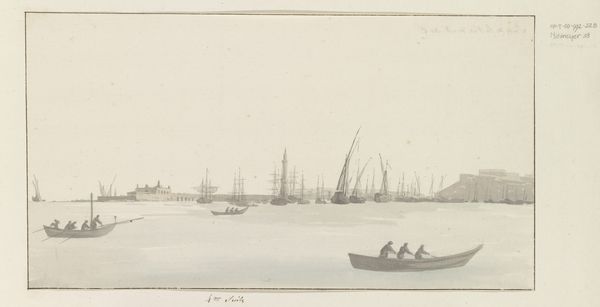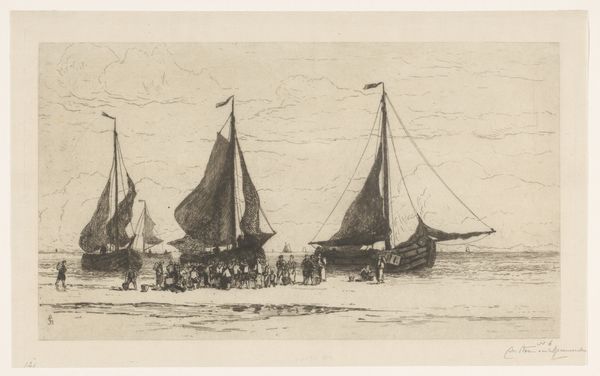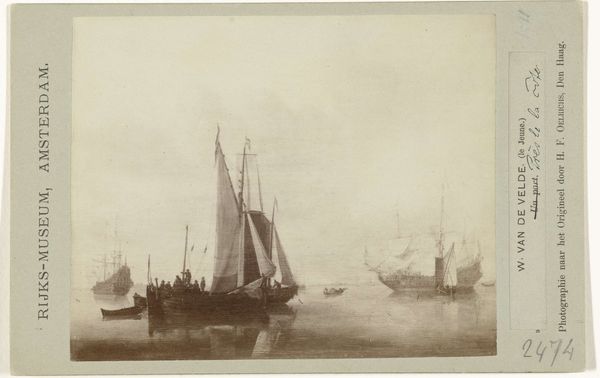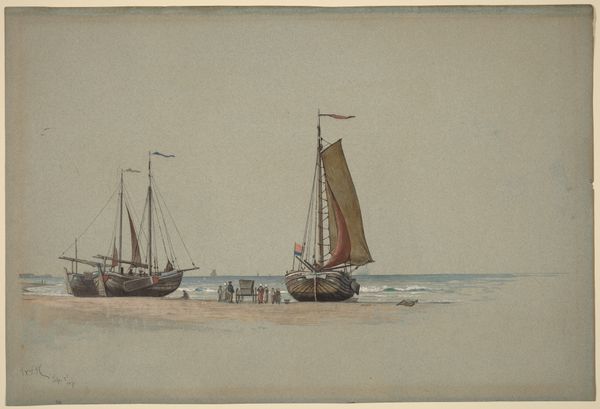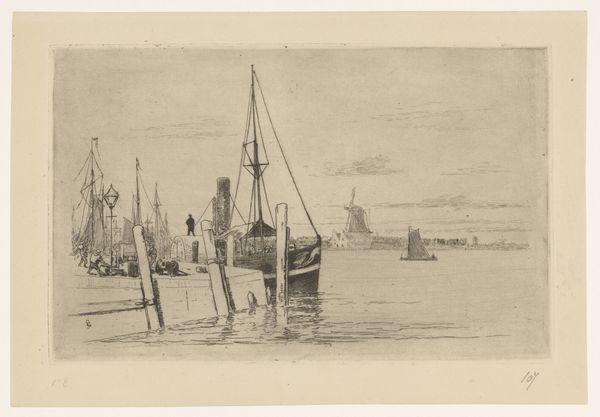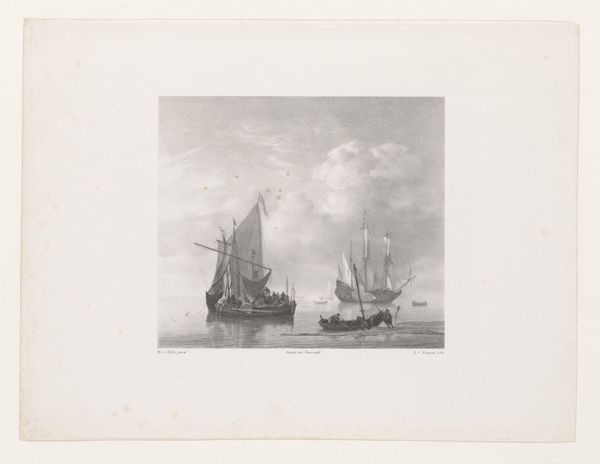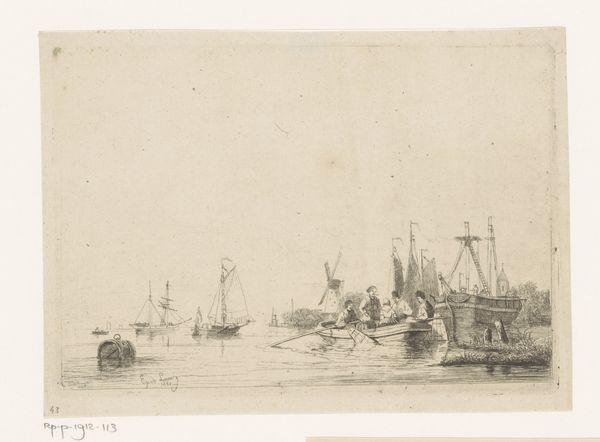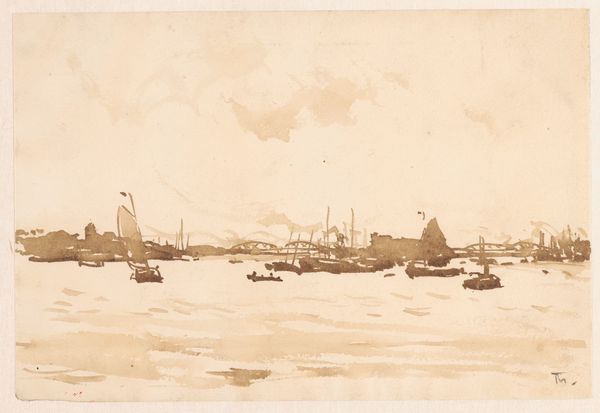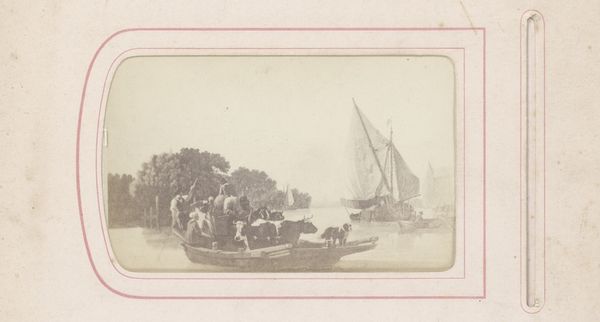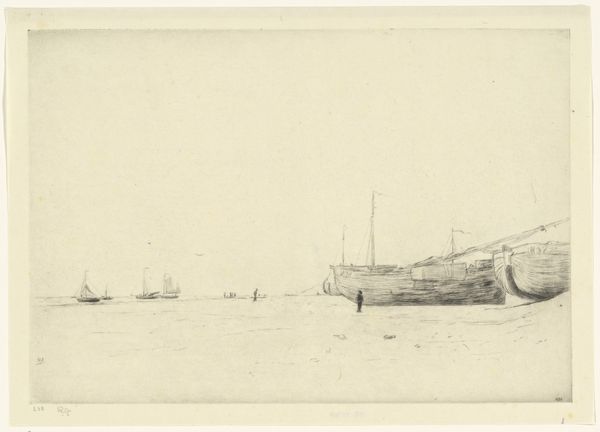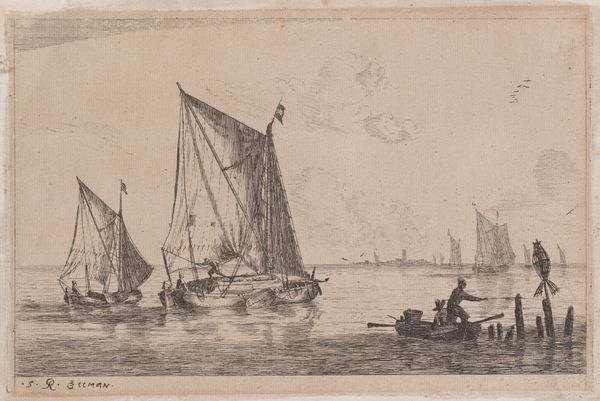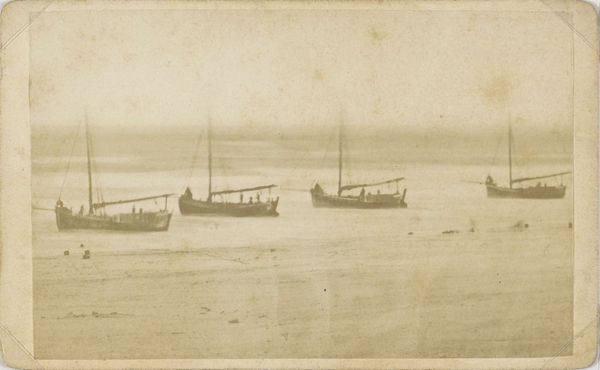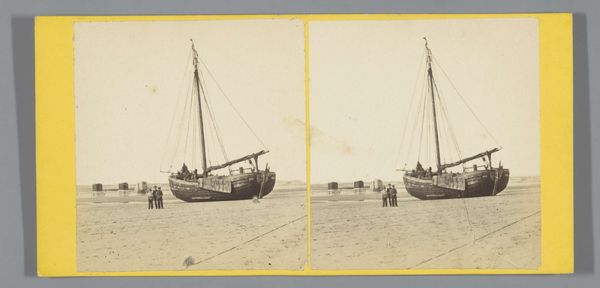
Schepen op het strand bij Scheveningen (mogelijk naar een tekening) c. 1860 - 1900
0:00
0:00
photography, gelatin-silver-print
#
still-life-photography
#
water colours
#
pictorialism
#
landscape
#
photography
#
coloured pencil
#
gelatin-silver-print
#
genre-painting
#
realism
Dimensions: height 50 mm, width 80 mm
Copyright: Rijks Museum: Open Domain
Curator: Let's delve into this gelatin-silver print titled "Schepen op het strand bij Scheveningen (mogelijk naar een tekening)," attributed to Andries Jager, and believed to be made sometime between 1860 and 1900. It’s currently held in the Rijksmuseum collection. Editor: My initial reaction is of a hazy memory, like looking through a vintage postcard. The limited tonal range and soft focus gives it a dreamlike quality. Curator: Indeed. The scene depicts fishing boats on the beach at Scheveningen, a bustling coastal town in the Netherlands. Consider how genre painting themes intersect with landscape to capture the spirit of labor and maritime life that, over time, the institution has shaped our perception and romanticization of working coastal towns through these kinds of artworks. Editor: It makes you wonder about the labour of it all. Gelatin-silver prints from this era are so tactile. Think of the entire process: the sensitizing, the developing, the printing under the sun… Each step requiring great skill, particularly in rendering what must have been, even in a static image, very reflective surfaces. Look how subtly those tonal relationships create luminosity. Curator: Absolutely. And the photographic technique contributes to the overall mood. The artist employs soft focus—associated with pictorialism. Pictorialism elevated photography to fine art status. It should be seen as challenging the straightforward recording aspect photography was known for at the time. This photo aims for aesthetic beauty and emotion through manipulations of the process. Editor: And consider Scheveningen itself at this time. We’re likely seeing an important site for the industrialization of fishing, which would influence trade, food economies and social hierarchies… The photographic techniques employed could be interpreted as deliberately downplaying that reality by focusing on mood, but the work happening here in front of the lens could easily have been framed, by another practitioner with the same methods and materials, as documentary truth. Curator: Very insightful, bringing in this other, competing perspective. It really shows how photography serves public roles. Editor: Ultimately, a close examination of materials and intention reveals how powerfully even seemingly straightforward photography can shape how we imagine the past. Curator: A wonderful insight—prompting us to critically consider photographic work from the period.
Comments
No comments
Be the first to comment and join the conversation on the ultimate creative platform.
